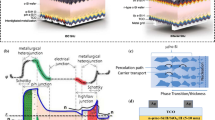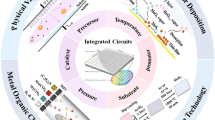Abstract
Due to integration concerns, the use of meta-stable junction formation approaches like laser thermal annealing (LTA), solid phase epitaxial regrowth (SPER), and flash annealing has largely been avoided for the 90nm CMOS node. Instead fast-ramp spike annealing has been optimised along with co-implantation to satisfy the device requirements, often with the help from thin offset spacers. However for the 65nm and 45nm CMOS node it is widely accepted that this conventional approach will not provide the required pMOS junctions, even with changes in the transistor architecture.
In this work, we will compare junction performance and integratablity of fast-ramp spike, flash, SPER and laser annealing down to 45nm CMOS. The junction depth, abruptness and resistance offered by each approach are balanced against device uniformity, deactivation and leakage. Results show that the main contenders for the 45nm CMOS are SPER and flash annealing – but both have to be rigorously optimised for regrowth rates, amorphous positioning and dopant and co-implant profiles. From the two, SPER offers the best junction abruptness (<1nm/dec) with leakage suitable for low power applications, while the flash anneal has the benefit of higher solid solubility (>4E20at/cm3) and less transistor modifications. As expected, Ge and F co-implanted spike annealed junctions do not reach the 45nm node requirements. For full-melt LTA, poly deformation on isolation can be reduced but geometry effects result in unacceptable junction non-uniformity.
Similar content being viewed by others
References
International Technology Roadmap for Semiconductors (Semic. Ind. Assoc, San Jose, 2001).
R. Lindsay, B.J. Pawlak, P. Stolk, and K. Maex, Mat. Res. Soc. Symp. Proc. Vol. 717, C2.1 (2002)
J-Y. Jin, J. Liu, U. Jeong, S. Metha, K. Jones, J. Vac. Sci. Tech. B 20(1) 2002, p422
K. Tsuji, K. Takeuchi, T. Mogami, IEDM Tech Dig 1999, p9
Jeff C. Gelpey, Kiefer Elliott, David Camm, Steve McCoy, Jonathan Ross, Daniel F. Downey, Edwin A. Arevalo, presented at ECS2002, to be published in J. Elect. Chem Soc 2003
J. Ross, S. McCoy, K. Elliott, J. Gelpey, D. F. Downey, E. A. Arevalo, RTP 2002 pp 99–105
R. Surdeanu, Y.V. Ponomarev, R. Cerutti, B.J. Pawlak, L.K. Nanver, I. Hoflijk, P.A. Stolk, C. J. J. Dachs, M.A. Verheijen, M. Kaiser, M.J.P. Hopstaken, J.G.M. van Berkum, F. Roozeboom, R. Lindsay, presented at ECS2002, to be published in J. Elect. Chem Soc 2003
B.J. Pawlak, R. Lindsay, R. Surdeanu, P. Stolk, K. Maex, X. Pages, Presented at Ion implantation Technology Sept 2002, to be published in IEEE 2003
B. J. Pawlak, R. Lindsay, R. Surdeanu, X. Pages, W. Vandervorst, K. v.d. Jeugd, to be presented at ECS2003
L. S. Robertson, PhD Thesis, University of Florida 2000
B.J. Pawlak, R. Lindsay, R. Surdeanu, B. Dieu, L. Geenen, I. Hoflijk, O. Richard, R. Duffy, T. Clarysse, B. Brijs, W. Vandervorst, C. Dachs, presented at USJ2003 workshop, Santa Cruz, April 2003
R. Lindsay, B. Pawlak, J. A. Kittl, K. Henson, S. Giangrandi, R. Duffy, R. Surdeanu, W. Vandervorst, X. Pages, K. van der Jeugd, P.Stolk, and K. Maex, presented at USJ2003 workshop, Santa Cruz, April 2003, submitted to JVST
Author information
Authors and Affiliations
Rights and permissions
About this article
Cite this article
Lindsay, R., Pawlak, B., Kittl, J. et al. A Comparison of Spike, Flash, SPER and Laser Annealing for 45nm CMOS. MRS Online Proceedings Library 765, 74 (2002). https://doi.org/10.1557/PROC-765-D7.4
Published:
DOI: https://doi.org/10.1557/PROC-765-D7.4




